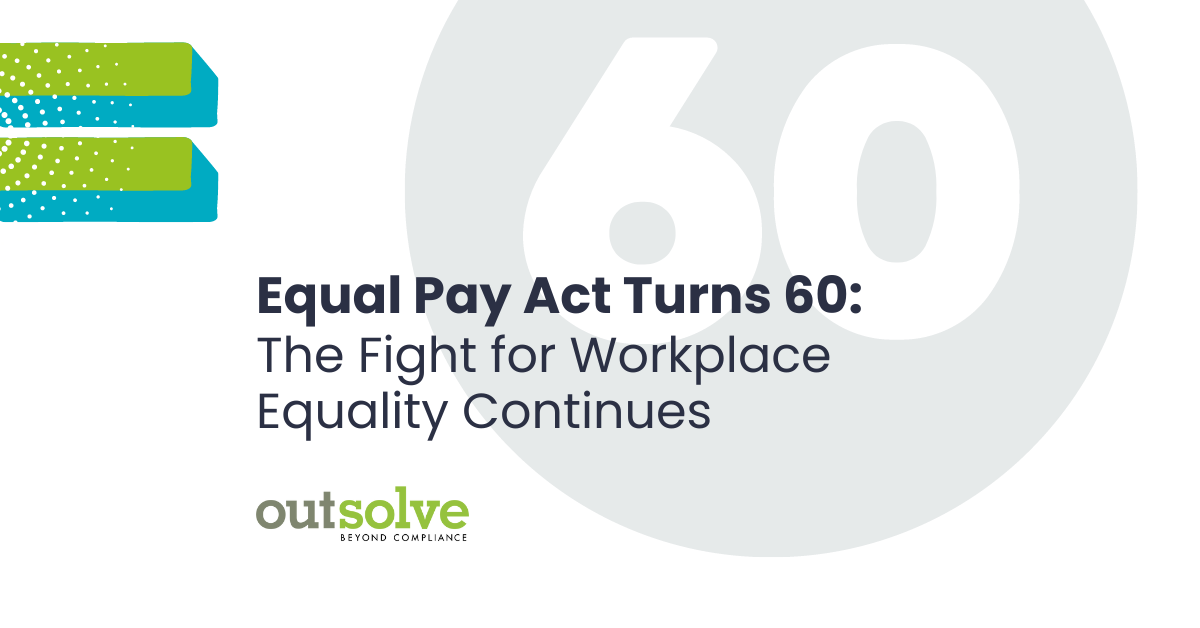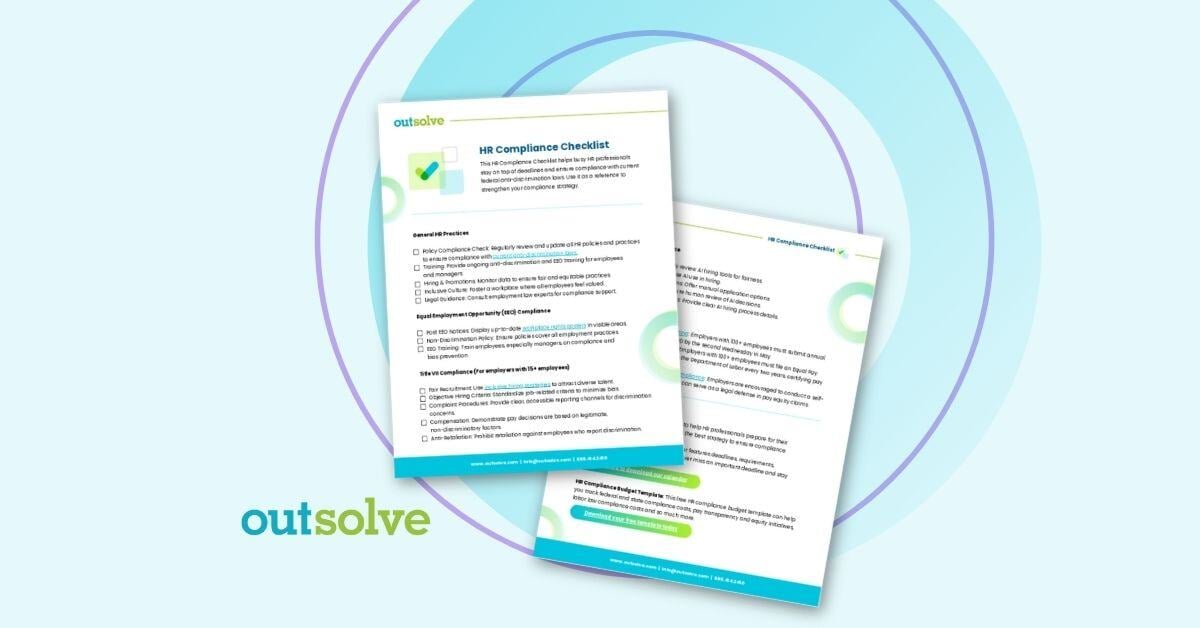OutSolve’s EEO colleague, Toni Ahl, is an occasional contributor to our blog. The views, thoughts, and opinions expressed in this article belong solely to Toni and do not necessarily reflect the viewpoint of OutSolve or its employees.
The Equal Pay Act (EPA), enacted in 1963, was modeled after the Fair Labor Standards Act (FLSA) to address wage disparities based on gender. The Department of Labor (DOL) was responsible for the FLSA and was given the enforcement authority for the EPA in 1963. In 1978, the enforcement authority for the EPA was transferred from the DOL to the Equal Employment Opportunity Commission (EEOC).
The EPA prohibits employers from paying employees of one gender less than employees of the opposite gender for equal work, performed under similar conditions. The critical inquiry in an EPA complaint is, "What are the job duties each employee is performing?" Job titles are not determinative in EPA complaints. Since the complaint alleges a sex-based wage difference, many complainants also file charges under Title VII of the Civil Rights Act of 1964, as amended, (Title VII) stating they are being paid differently due to sex.
Because it was patterned after the FLSA, there are several differences between complaints filed under the EPA and those filed under Title VII. A major difference is the EPA allows complainants to file suit in Federal District Court without first filing a complaint with EEOC. Another difference is complainants have two years to file with EEOC or in court. If the violation is found to be willful, complainants have three years to file. Under Title VII, charging parties must file with EEOC within 180 days or 300 days depending on whether there is a state statute that prohibits sex-based wage discrimination.
Title VII applies to employers with at least fifteen employees. For the EPA, an employer only has to have one employee. The current employee may compare themselves to a prior employee to show a sex-based differential in wages. The EPA prohibits decreasing the wages of the higher paid employee to that of the lower paid employee in order to resolve the wage issue.
The Civil Rights Act of 1991, allowed for compensatory and punitive damages to be assessed against employers if violations are found. The cap for compensatory and punitive damages for employers with 500 or more employees is $300,000.00. No punitive damages may be allowed against local, state or federal governmental agencies. The EPA does not allow for compensatory damages, however, if a violation is found, liquidated damages may be awarded to the complainant.
When investigating complaints filed under the EPA, it is essential that individuals who are being compared are interviewed. Job descriptions are helpful, though many do not reflect what the employees actually do on a daily basis. The EEOC will look at the skill, effort, and responsibility required for each position as well as the working conditions for each. The affirmative defenses for claims under the EPA are a seniority system, or merit system, a system measuring quantity and quality of production, and any factor other than sex. Employers frequently assert education as a defense. When considering education as a factor for paying differentials, the education must be job-related in order to justify the difference in pay.
In 2023, the gender pay gap where women earn an average of $0.82 for every $1.00 earned by men reflects and ongoing disparity in pay between sexes in the United States. Efforts to close the gender pay gap involve policy changes, awareness campaigns, workplace initiatives, and continued advocacy for pay equality.
If you have questions about the EPA, contact Toni Ahl at (502) 553-7648 or eeoadvantage@gmail.com.
President at EEO Advantage, LLC
Weekly OutLook
Featured Posts

New Year, New Deadlines: 2026 HR Compliance Calendar

outRageous HR: Plan Now or Pay Later
Related Posts

OFCCP Continues to Enforce Veterans Affirmative Action Obligations
On January 7, 2026, OFCCP published a routine Notice in The Federal Register informing government contractors and subcontractors that it intends to...

File Smarter, Not Harder: Start the Year with OutSolve
HR faces similar challenges every January, whether it’s a sudden rush of deadlines, new regulations to understand, updating labor law posters, or...

New York City Pay Equity Report: What it Entails
The New York City Council voted to pass an amendment in December 2025 requiring private employers to report pay data annually. This legislation also...
 Toni Ahl
Toni Ahl

